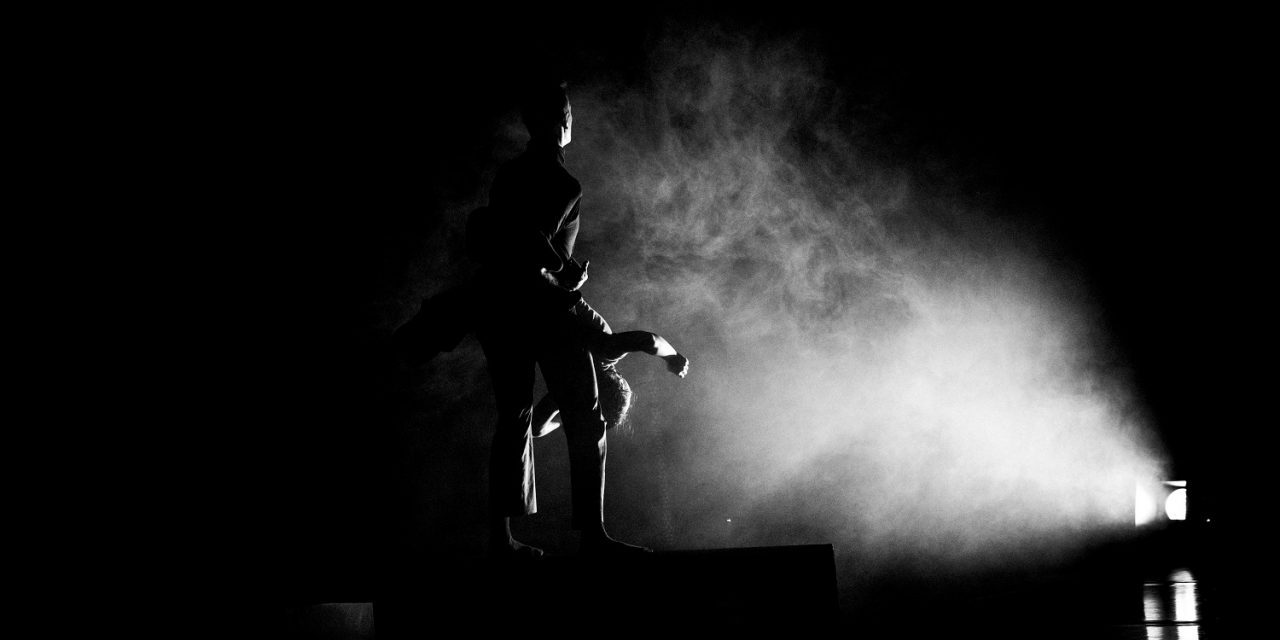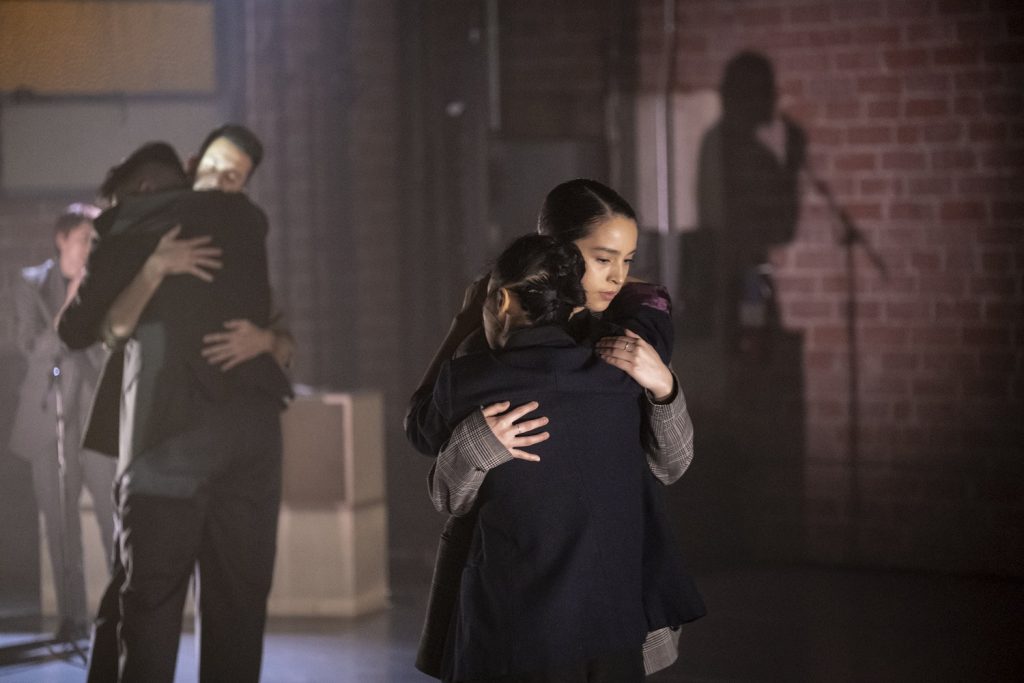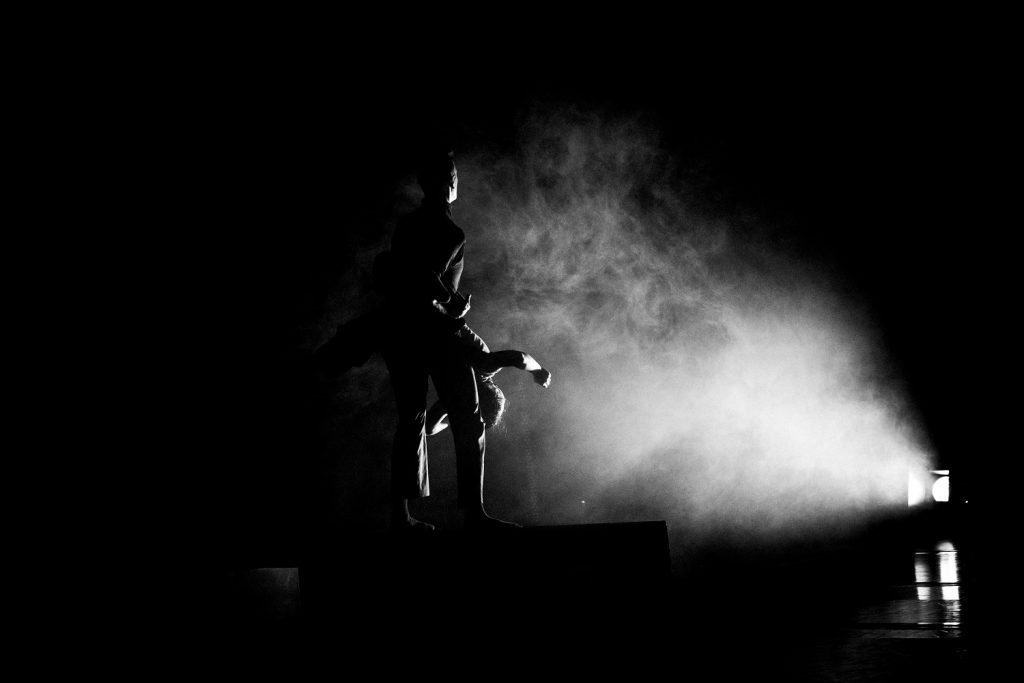Jay Carlon is an artist whose work has appeared in theaters, on the beaches of the Pacific Ocean, in the patio area of the Raymond Kabbaz Theater, in the parking lot of the Electric Lodge in Venice, Ca., in private homes, and most recently at the beautiful LA Dance Project Studios. His work has been labeled performance art, site specific dance and contemporary dance art. Carlon speaks of himself as a contemporary choreographer, which in today’s dance terminology translates to mean all inclusive.
There were two major waves of Filipino immigrants to migrate to America; the first between 1920 and 1940 and the second from the early 1960s to the present. Carlon’s father was among the first wave of immigrants and his mother among the second. FLEX was created and directed by Carlon, and developed and supported through LADP/MAKING:LA Residency Program. I attended the preview performance on February 6, 2019, along with a large group of wonderful young people from The Gabriella Foundation. The premiere performance of FLEX was Thursday, January 7th and it will run through Sunday, February 10.
This is a very personal work for Carlon, dedicated to his parents and pays homage to all immigrants who have faced, and continue to face, prejudice, bigotry and other adversities from people in a new country. FLEX references the untold story of the Filipino-American War of 1899-1902; a war that most history books fail to mention the genocide carried out on the people of the Philippines by the USA. The final death toll is disputed, but some claim it to be as high as 9 million.
FLEX is a dance theater piece that is thought provoking, beautifully performed and riddled with images that range from casual social dancing, migrants working in crop fields to a funeral procession of one of those over-worked field hands. Carlon uses spoken word, a minimum of props and intense and beautiful lighting by Matthew Johns. There is live music performed by composer and musician Alex Wand and songs, both recorded and performed live, that take us back to an earlier era. Songs like Cherry Pink and Apple Blossom White by Pérez Prado, Tennessee Waltz by Patti Page and Cha Cha Cha by Indian composer Iqbal Quraishi. Another interesting note: Carlon, who put together the costumes, used original clothes from his father’s wardrobe; a fact that added an even more meaningful touch to this new work.
The Narrator, David Castillo, was first seen seated at a small table center stage, busily working on an old typewriter. Behind him, seated on what appeared to be a very long bench, were 8 dancers dressed in gray, black and brown pants, dark colored t-shirts and men’s dress jackets. The Narrator introduces himself and the dancers and explains that this is a memory play; a dance/play based on memories. We learn that these memories are both real and shaped along the lines of historical fiction, enhanced by projections of photographs of Filipino migrants that included Carlon’s father.
The movement vocabulary for FLEX included pedestrian walking and running used to convey migration, protest or as a transitional tool between sections. Carlon never lost track of the type of work that he was making when he introduced dance movements. The story line was always visible with the solos, duets or group dance sections. Parts of the work appeared to have been developed from a technique known as Contact Improvisation, but it never felt arbitrary. The entanglement of bodies, with wonderful lifts moved with, not against, the narrative of the work.
FLEX felt slow at first, but it soon pulled us in as the characters took on their personalities and the complexity of the work became apparent. The “fog”, the lighting and the characters’ participation in shifting the props around, all felt necessary to the plot of a people migrating, being displaced, abused and/or exploited. Carlon’s work, however, resists simply painting one color of oppression. FLEX is also optimistic and displays a strong sense of community and cultural support.
One gorgeous section is at first difficult to see. A very bright spotlight is focused directly at the audience and the room fills with smoke. In front of the light sits a bench with a woman lying on top and a man stretched out underneath. A beautiful love duet transpires in what I can only describe as a blinding silhouette. One’s eyes have to first adjust to the light and smoke, but once accomplished, the outline of two people traveling together to places unfamiliar begins to unfold. The visual “obstructions” become part of their hazardous journey.
David Castillo deserves mentioning for his performance in FLEX. He speaks, acts, moves quite well among the dancers, plays an instrument and has a clear and beautiful singing voice with a wide range of octaves. Joan Padeo and Ching Ching Wong gave stunning performances. and Padeo’s rendition of Tennessee Waltz is a joy. The other very talented and strong performers included Orlando Agawin, Spencer Jensen, Daniel Miramontes, Samantha Mohr, Justin Morris, and Gigi Todisco.
FLEX runs through Sunday, February 10, 2019. For information and tickets, click here.
For more information on Jay Carlon, click here.
For more information on LA Dance Project and LADP/MAKING:LA, click here.
Featured image:













